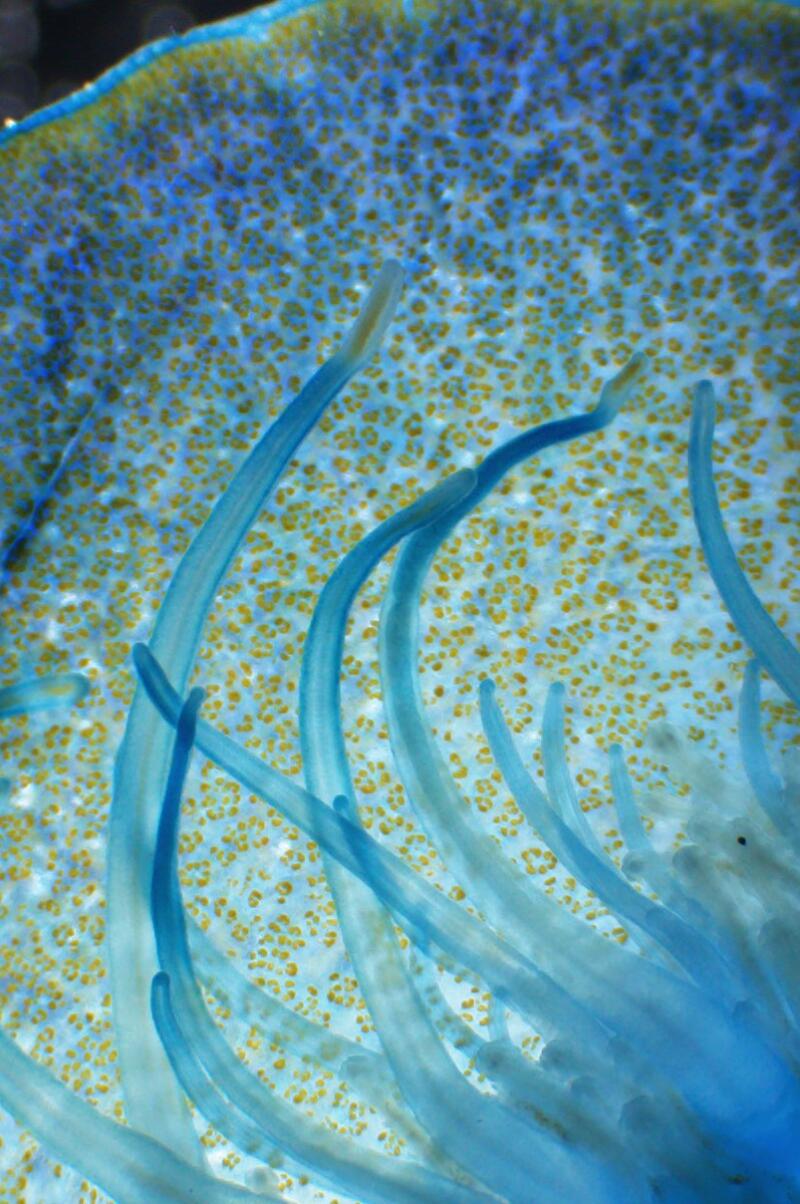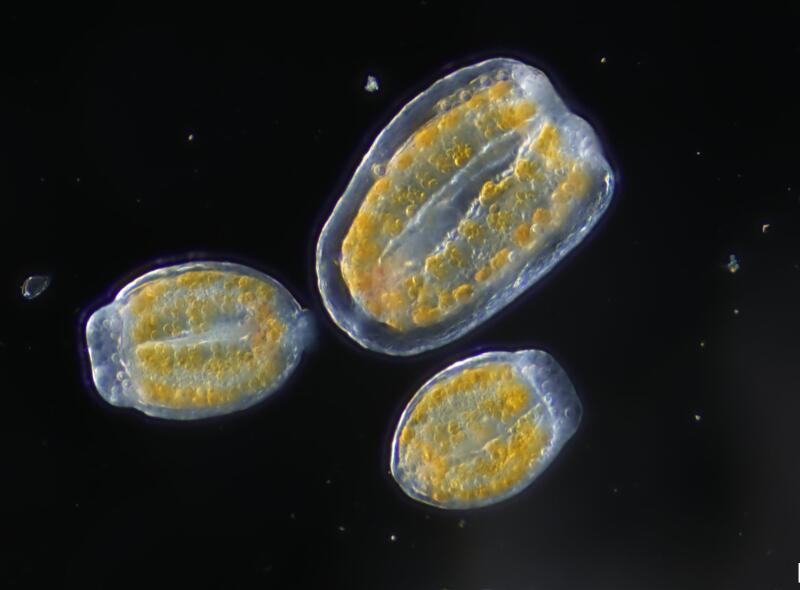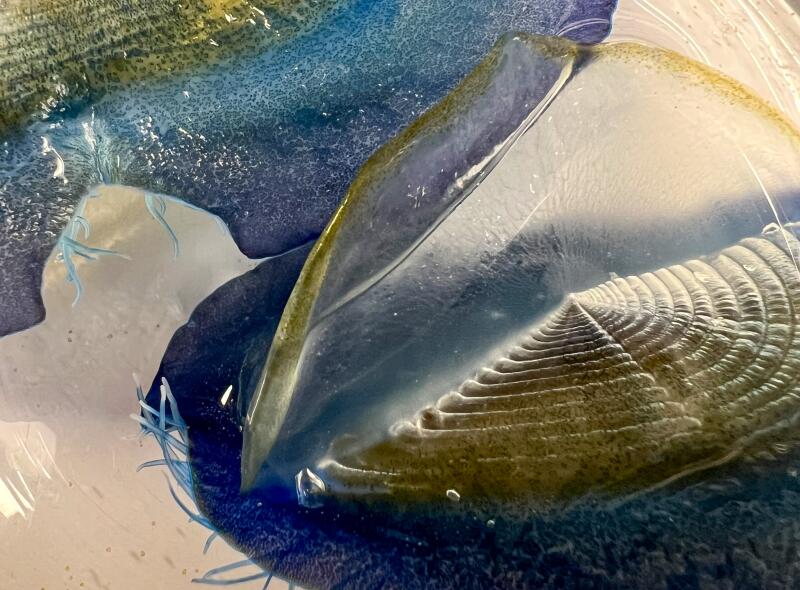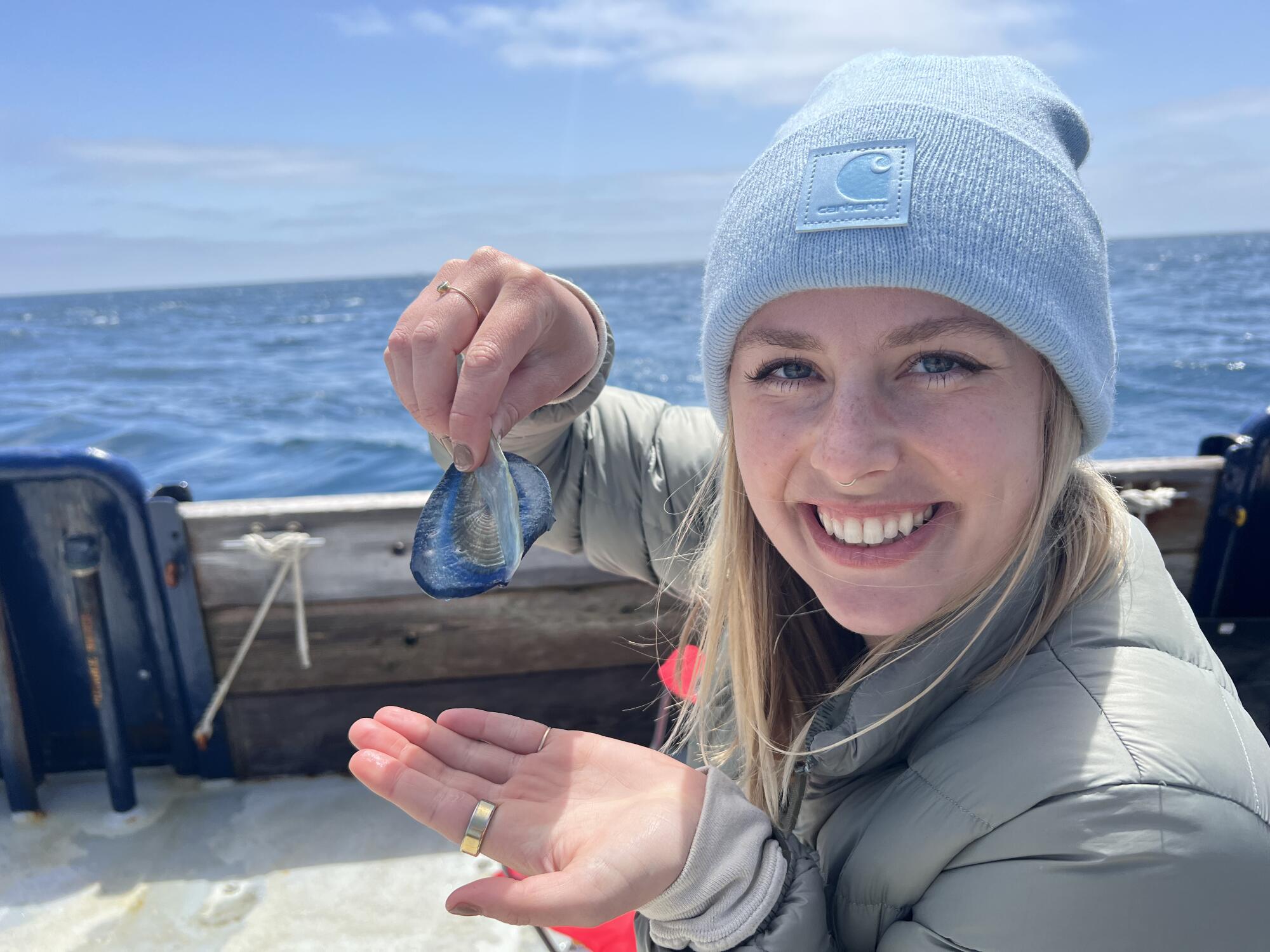Science
Killer whales are killer whales, right? It might be a lot more complicated than that

More than 150 years ago, a San Francisco whaler noticed something about killer whales that scientists may be about to formally recognize — at least in name.
Charles Melville Scammon submitted a manuscript to the Smithsonian in 1869 describing two species of killer whales inhabiting West Coast waters.
Now a new paper published in Royal Society Open Science uses genetic, behavioral, morphological and acoustic data to argue that the orcas in the North Pacific known as residents and transients are different enough to be distinct species. They propose using the same scientific names Scammon is believed to have coined in the 19th century.
Aggressive and impactful reporting on climate change, the environment, health and science.
Killer whales, found in all oceans, are currently considered one global species. The new proposed species would mark the first split of the ferocious apex predators, which, if approved, could have significant conservation and scientific implications — in addition to furthering a decades-long quest to properly classify the whales.
The two proposed species may look indistinguishable to the untrained eye, but there are subtle differences in their fins and markings — and many more unseen ones. They don’t speak the same “language” or nosh on the same food. And they have no interest in hanging out with one another, despite often dwelling in the same waters. Most significantly, researchers say, their DNA shows clear distinction.
Transients — also called Bigg’s killer whales — hunt seals and other marine mammals in small packs in expansive waters stretching from Southern California to the Arctic Circle. And they’re not very chatty while they sneak up on prey — they need to maintain stealth. They sport pointy, triangle-shaped dorsal fins with a solid white “saddle patch” behind it.
Residents, meanwhile, stick to fish — primarily Chinook salmon. They love to gab and hang out with the family. In fact, most offspring stay with their mothers their entire lives. Because fish don’t hear very well, they’re free to chatter as they chow down. Residents hew closer to coastlines, from Central California to southeast Alaska, where salmon congregate. Their fins tend to curve back toward the tail and intrusions of black sometimes extend into their saddle patches.
A third type of killer whale roams the Pacific, but less is known about it; these offshore whales live farther out and prey on sharks and other large fish. A recent study found evidence of another, previously unknown group in the open ocean.
Taxonomy, the scientific discipline of naming and classifying animals, is how we break down critters into species. It’s an intellectual exercise that has real-world consequences.
“We’re facing a global conservation crisis, losing species that we don’t even know exist,” said Phillip Morin, the new study’s lead author and a marine mammal geneticist at the National Oceanic and Atmospheric Administration’s Southwest Fisheries Science Center.
If you think of killer whales as one species — a big pie — then killing some of them off here might not be a cause for concern, Morin said. But if you start parsing out species and subspecies — slices of the pie — then it’s suddenly possible to lose a unique, irreplaceable group.
A portion of the fish-eating resident killer whales — known as Southern Residents — is already listed as endangered in the U.S. and Canada. Salmon depletion from overfishing and habitat destruction has starved them, and only about 75 are left now. But if they’re designated as part of a species, the International Union for Conservation of Nature will assess them (and transients) separately.
Study co-author Thomas Jefferson, a marine mammal biologist, also with NOAA’s Southwest Fisheries Science Center in La Jolla, believes the residents would probably be categorized on the conservation union’s Red List as threatened or endangered, possibly even critically endangered.
About 20 years ago, when Morin first began his foray into the world of marine mammal genetics, he said there was agreement that the taxonomy of cetaceans — which includes whales, dolphins and porpoises — was “really poor.”
Classification of land animals is often done by measuring bones, but water dwellers are hard to collect and store. Researchers don’t have extensive collections of whale skulls in museums from around the world, and it isn’t necessarily ethical to acquire them. They needed other tools — such as better genetics, drone recordings and satellite tagging — which didn’t exist yet.
“The genetics has now finally come to the point where we can do this on a broad scale and get the kind of resolution and information that we didn’t have,” Morin said.
Over two decades, researchers went from analyzing thousands to billions of base pairs of DNA from individual killer whales. The enhanced detail has allowed scientists to “look back through time,” Morin said, and answer questions about which killer whale populations are closely related — or not — and when differences emerged.
Based on their genetic analyses, Morin and his team estimate that transients diverged from other orcas between 200,000 and 300,000 years ago, while residents began to split off about 100,000 years ago.
Only a small tissue sample is needed to analyze killer whale DNA to tell a big genetic story.
“We can actually go out with a crossbow and collect a little teeny bit of tissue from a living whale — just shoot a little dart at it and collect a little bit of skin,” Jefferson said.
Of course, scientists in the 19th century dedicated to describing and categorizing whales didn’t have access to this cutting-edge technology.
Virtually nothing was known about marine mammals of the West Coast of North America in the mid-1800s, when Charles Melville Scammon, the whaler, began meticulously documenting and measuring cetaceans, Jefferson said. (Scammon bears no relation to Herman Melville, author of whale-centric “Moby Dick.”)
When Scammon’s paper from 1869 describing a variety of cetaceans of the West Coast, including orcas, made it to the Smithsonian, he had “every reason to believe that his article would be well received,” according to “Beyond the Lagoon,” a biography of the seaman. He knew things no other zoologist did because of his proximity to the whales and keen eye.
In a paper penned three years later, Scammon paints a vivid picture of killer whales, from their “beautifully smooth and glossy skin” to their “somewhat military aspect,” even including drawings. He recounts a gruesome attack, seen in “Lower California,” by a trio of killer whales on a gray whale and her baby.
The orcas assaulted the pair for at least an hour, eventually killing the younger whale while exhausting the mother. “As soon as their prize had settled to the bottom, the trio band descended, bringing up large pieces of flesh in their mouths, which they devoured after coming to the surface,” Scammon wrote. “While gorging themselves in this wise, the old whale made her escape, leaving a track of gory water behind.”
What Scammon didn’t know was that his earlier manuscript would fall into the hands of Edward Drinker Cope, a naturalist who had a reputation for being overly ambitious and warring with colleagues for credit.
Cope, secretary of the Academy of Natural Sciences of Philadelphia, slapped his own introduction on the paper with descriptions and Latin names of the orcas inhabiting the Northern Pacific.
Because of rules governing the scientific naming of animals, Cope would forever be credited with the names believed to have been chosen by Scammon. Nevermind that Cope probably never saw a living killer whale.
The paper also misidentified Scammon and gave him little credit. When the whaler saw it, he was furious, according to the biography.
“It‘s a really, really strange and very weird and dramatic episode in the history of marine mammal biology, how these names came about,” Jefferson said.
Many of Scammon’s observations turned out to be erroneous. Often he logged differences between male and female killer whales rather than differences between species, said Michael Milstein, a spokesperson for NOAA. But his inquiry set the stage for more rigorous research to come.
Morin and his research team propose using the same Latin names from more than a century ago for the species they identified in their recent study.
The researchers call transients Orcinus rectipinnus, noting that, in Latin, “recti means right or upright, and pinna means fin, feather, or wing, most likely referring to the tall erect dorsal fin of males.”
Residents, meanwhile, are labeled Orcinus ater. Ater means black or dark, according to the study, “which probably refers to the largely black color of this species.”
All killer whales are currently classified as Orcinus orca, a macabre nod to their vicious reputation. Some say Orcinus means “of the kingdom of the dead,” a reference to Orcus, a Roman god of the underworld.
There are also common, or informal names, to consider.
The researchers suggest sticking with “Bigg’s” for transients, honoring Michael Bigg, the father of modern-day orca research.
The team plans to consult tribes who have a connection to the resident whales, including the Lummi Nation and Tulalip tribes of the Northwest, before settling on a common name, according to Milstein.
“They decided not to try to rush it to match the paper, but to take the time to make sure it is done in a way that everyone understands and believes in,” Milstein said.
John Durban, an associate professor with Oregon State University’s Marine Mammal Institute and co-author of the new study, said he supports using the name “Blackfish,” which is used by some tribes in the Pacific Northwest.
Complex rules govern the discipline of taxonomy, and typically a specimen must be designated as a reference point when it’s first named.
However, the original specimens studied by Scammon were destroyed or disappeared. According to Jefferson, one at the California Academy of Sciences in San Francisco was wiped out by the historic 1906 earthquake and subsequent fire. Another, believed to have been in Scammon’s personal possession, can’t be found.
So the researchers found stand-ins at the Smithsonian.
Whether the broader community of marine mammal biologists will accept the researchers’ findings — and adopt Scammon’s and Cope’s names — will soon be determined.
The proposal is slated to go before a committee from the Society for Marine Mammalogy, which will vote in a few months on whether to greenlight designation of the species. Jefferson and another author of the new study sit on the committee and will recuse themselves from the vote.
Even today, Scammon has to contend with detractors.
Robert Pitman, a marine ecologist with Oregon State University who was not involved in the study, isn’t “entirely happy” with the names put forth.
The names were conceived “before science, by and large, especially biological science, had any rigor,” Pitman said. “And then the descriptions that [Scammon] puts with those names are just so vague. I’m kind of doubtful that those names will stand.”
Names aside, he expects most marine mammalogists will be on board with the proposed species; many have suspected species-level differences among the well-studied whales of the Pacific Northwest. He said the case for splitting off the mammal-eating transients is particularly strong.
The newly identified species are believed to be harbingers of more to come.
Pitman, who has studied killer whales in Antarctica for over 10 years, said there’s a similar divide between mammal- and fish-eating killer whales in those waters.
There are five identified types, and Pitman thinks at least one will turn out to be a different species. Some look dramatically different.
“And it’ll probably be easier now that somebody’s already made the first step in saying, ‘There’s more than one species out there.’”

Science
A champion of psychedelics who includes a dose of skepticism

Book Review
Trippy: The Peril and Promise of Medicinal Psychedelics
By Ernesto Londoño
Celadon Books: 320 pages, $29.99
If you buy books linked on our site, The Times may earn a commission from Bookshop.org, whose fees support independent bookstores.
Ernesto Londoño’s engrossing and unsettling new book, “Trippy: The Peril and Promise of Medicinal Psychedelics,” is part memoir, part work of journalism. It tells of how Londoño sought relief from depression with mind-altering drugs. It also investigates the current fad of “medicinal” psychedelics as a treatment for those struggling with depression, trauma, suicidality and other conditions.
Like other psychedelic enthusiasts, Londoño — a journalist who reported in conflict zones such as Iraq and Afghanistan and served as the New York Times’ Brazil bureau chief — wants us to like psychedelics. They relieve him of depression and suicidality. He then continues to “trip” to engage in self-exploration: escape reality, journey into himself and return with an expanded view of the world.
Calling street drugs and hallucinogenics such as psilocybin, MDMA/ecstasy, LSD and ayahuasca “medicine” is problematic. Psychedelic psychiatry has had a resurgence in the past decade, though only among a minority of medical professionals. Mainstream psychiatry largely abandoned psychedelics by the 1970s, for a variety of reasons.
The renewed interest in psychedelics as a treatment seems to arise more from hope than science — a wish that medicinal psychedelics will be effective because our current treatments are inadequate. Antidepressants known as SSRIs and other approaches are often ineffectual, but that doesn’t mean psychedelics, which can be damaging to many in acute distress, should be tried.
Londoño is more balanced in discussing the benefits and dangers than Michael Pollan and others. Pollan’s bestselling book-turned-Netflix-series “How to Change Your Mind” proselytizes medicinal psychedelics in a way that “Trippy” thankfully doesn’t.
Londoño brings a healthy dose of skepticism. Psychedelics aren’t romanticized with examples of the counterculture movement of the 1960s or hyped by listing celebrities currently using them. The author often questions how much of what he’s part of is “a cult” and if what he’s taking is “voodoo,” not medicine.

Ernesto Londoño, author of “Trippy.”
(Jenn Ackerman)
“Trippy” is a fascinating account of the world of medicinal psychedelics. We attend psychedelic retreats in the Amazon and Latin America. We drink ayahuasca, a syrupy, foul-tasting psychoactive tea that induces vomiting and hallucinations. Ayahuasca calls back “memories” — some real, others false — that participants take as the cause of their emotional ill health.
We visit a ketamine clinic, where Londoño feels a “blissful withdrawal,” retaining “strong powers of perception” but losing “any sense of being a body with limbs that can move at will.”
We watch MDMA (a German pharmaceutical from 1912 now best known as the street drug called ecstasy or molly) being administered at a veterans hospital to treat post-traumatic stress disorder. At a “treatment center”/church/spiritual refuge in Austin, Texas, we witness tobacco being blown into a man’s nostrils, extract from an Amazonian plant squirted into his eyes, and toad venom burned into his forearms under the guise of spiritual salvation.
Unlike the unbridled enthusiasts, Londoño exposes the predatory nature of the psychedelic industry and how it exoticizes the use of hallucinogens as Indigenous medicines. We’re privy to some scandals in this field, specifically sexual abuse and harassment and taking advantage of vulnerable people looking for help.
It’s an engaging memoir of one man’s experiences with psychedelics. Londoño’s little asides, like when he’s talking about meeting the man who would become his husband, endear him to us: “I saw the profile of a handsome man visiting from Minnesota for the weekend. He was a vegetarian and veterinarian. Swoon!”
But as a work of mental health journalism, “Trippy” isn’t, as the book jacket suggests, “the definitive book on psychedelics and mental health today.”
Much is overlooked and left out. Londoño fails to stress that these treatments best serve the “worried well,” those struggling with relatively mild complaints, but can be extremely unsafe for those with serious mental illness, meaning severe dysfunction. Such a person has typically been diagnosed with bipolar disorder, major depressive disorder with suicidality, post-traumatic stress or schizophrenia. They can’t hold a job or live independently, often for years.
Most people Londoño interviews in “Trippy” seek “bliss,” not lifesaving measures to give them a chance at basic functioning. The retreats are less mental health centers than gatherings of spiritual seekers.
Full disclosure: I read “Trippy” with an open mind and as someone who spent 25 years in the American mental health system with serious mental illness. Those years passed the way they do for so many: a string of hospitalizations endured, countless therapeutic modalities tried, numerous mental health professionals seen and myriad psychiatric medications taken (yes, in the double digits).
“Medicinal” psychedelics never came up as a potential treatment. I recovered before fringe psychiatry’s renewed interest in psychedelics became a fad in the past decade.
It’s unsettling that Londoño doesn’t mention the recovery movement and what we know can lead to mental health recovery. He doesn’t mention the five Ps, which are based on the four Ps that Thomas Insel, former head of the National Institute of Mental Health, writes about in “Healing: Our Path from Mental Illness to Mental Health.” To heal, we need people (social support), place (a safe home), purpose (meaning in life), payment (access to mental health care) and physical health (a clean diet and, ironically, no drugs or alcohol).
In this, Londoño fails to explore whether his recovery had as much to do with the changes he made as a result of his first treatment/trip as with psychedelics themselves: changes in diet, renewed purpose, finding love, moving into a new home, leaving his stressful job. If two centuries of psychiatric research has taught us one thing, it’s that there is no magic bullet for mental health recovery.
The book’s most compelling explorations into psychedelics as mental health treatments come when Londoño discusses their use in treating trauma, particularly that which war journalists and veterans experience.
He also explores the pervasiveness of mental health issues and the particular challenges LGBTQ+ people can face.
“Trippy” raises seminal questions we need to be asking as the psychedelic industry reaches further into mental health treatment:
What is “medicine” and what is an illicit drug?
Are we trying to treat those in crisis or simply help anyone escape the suffering that’s part of the human experience?
Should we continue to try more and more extreme treatments?
Or should we finally pay attention to and change systemic issues that are the root cause of so much mental and emotional distress?
Sarah Fay is the author of the bestselling memoirs “Pathological: The True Story of Six Misdiagnoses” and “Cured.”
Science
Maps of Two Cicada Broods, Reunited After 221 Years

This spring, two broods of cicadas will emerge in the Midwest and the Southeast, in their first dual appearance since 1803.
A cicada lays eggs in an apple twig.
“Insects: Their Ways and Means of Living,” by Robert E. Snodgrass, 1930, via the Biodiversity Heritage Library
Brood XIII, the Northern Illinois Brood, hatched and burrowed into the ground 17 years ago, in 2007.
Brood XIX, the Great Southern Brood, hatched in 2011 and has spent 13 years underground, sipping sap from tree roots.
The entomologist Charles L. Marlatt published a detailed map of Brood XIX, the largest of the 13-year cicada broods, in 1907.
Historic map of cicada emergence.
He also mapped the expected emergence of Brood XIII in 1922.
Historic map of cicada emergence.
This spring the two broods will surface together, and are expected to cover a similar range.
Modern map of cicada emergence.
Up to a trillion cicadas will rise from the warming ground to molt, sing, mate, lay eggs and die.
A Name and a Number
Charles L. Marlatt proposed using Roman numerals to identify the regional groups of 13- and 17-year periodical cicadas, beginning with Brood I in 1893.
A brood can include up to three or four cicada species, all emerging at the same time and singing different songs. Long cicada lifespans of 13 or 17 years spent underground have spawned many theories, and may have evolved to reduce the likelihood of different broods surfacing at the same time.
Large broods might sprawl across a dozen or more states, while a small brood might only span a few counties. Brood VII is the smallest, limited to a small part of New York State and at risk of disappearing.
At least two named broods are thought to have vanished: Brood XXI was last seen in 1870, and Brood XI in 1954.
Not Since the Louisiana Purchase
Brood XIII and Brood XIX will emerge together this year, for the first time in more than two centuries. But only in small patches of Illinois are they likely to come out of the ground in the same place.
In 1786 and 1790, the two broods burrowed into Native lands, divided by the Mississippi River into nominally Spanish territory and the new nation of the United States.
An historic map of the United States from 1783.
Brood XIII entered the ground in 1786, and Brood XIX in 1790. (Expected 2024 ranges are overlaid on the map.)
An historic map of the United States from 1783.
As the ground was warming in April 1803, France sold the rights to the territory of Louisiana, which it acquired from Spain in 1800, to the United States for $15 million.
An historic map of the United States from 1801. That spring, Brood XIII and Brood XIX emerged together into a newly enlarged United States.
An historic map of the United States from 1803.
Their descendants — 13 and 17 generations later — are now poised to return, and will not sing together again until 2245. An historic map of the United States from 1868.
A ‘Great Visitation’
After an emergence of Brood X cicadas in 1919, the naturalist Harry A. Allard wrote:
Although the incessant concerts of the periodical cicadas persisting from morning until night became almost disquieting at times, I felt a positive sadness when I realized that the great visitation was over, and there was silence in the world again, and all were dead that had so recently lived and filled the world with noise and movement.
It was almost a painful silence, and I could not but feel that I had lived to witness one of the great events of existence, comparable to the occurrence of a notable eclipse or the invasion of a great comet.
Then again the event marked a definite period in my life, and I could not but wonder how changed would be my surroundings, my experiences, my attitude toward life, should I live to see them occur again seventeen years later.
The transformation of a cicada nymph (1), into an adult (10).
“The Periodical Cicada,” by Charles L. Marlatt, 1907, via the Biodiversity Heritage Library
Science
What are the blue blobs washing up on SoCal beaches? Welcome to Velella velella Valhalla

The corpses are washing up by the thousands on Southern California’s beaches: a transparent ringed oval like a giant thumbprint 2 to 3 inches long, with a sail-like fin running diagonally down the length of the body.
Those only recently stranded from the sea still have their rich, cobalt-blue color, a pigment that provides both camouflage and protection from the sun’s UV rays during their life on the open ocean.
Aggressive and impactful reporting on climate change, the environment, health and science.
These intriguing creatures are Velella velella, known also as by-the-wind sailors or, in marine biology circles, “the zooplankton so nice they named it twice,” said Anya Stajner, a biological oceanography PhD student at UC San Diego’s Scripps Institution of Oceanography.
A jellyfish relative that spends the vast majority of its life on the surface of the open sea, velella move at the mercy of the wind, drifting over the ocean with no means of locomotion other than the sails atop their bodies. They tend to wash up on the U.S. West Coast in the spring, when wind conditions beach them onshore.
Springtime velella sightings documented on community science platforms like iNaturalist spiked both this year and last, though scientists say it’s too early to know if this indicates a rise in the animal’s actual numbers.
Velella are an elusive species whose vast habitat and unusual life cycle make them difficult to study. Though they were documented for the first time in 1758, we still don’t know exactly what their range is or how long they live.
These beaching events confront us with a little-understood but essential facet of marine ecology — and may become more common as the oceans warm.
“Zooplankton” — the tiny creatures at the base of the marine food chain — “are sort of this invisible group of animals in the ocean,” Stajner said. “Nobody really knows anything about them. No one really cares about them. But then during these mass Velella velella strandings, all of a sudden there’s this link to this hidden part of the ocean that most of us don’t get to experience.”
What looks like an individual Velella velella is actually a colony of teeny multicellular animals, or zooids, each with their own function, that come together to make a single organism. They’re carnivorous creatures that use stinging tentacles hanging below the surface to catch prey such as copepods, fish eggs, larval fish and smaller plankton.
Unlike their fellow hydrozoa, the Portuguese man o’ war, the toxin in their tentacles isn’t strong enough to injure humans. Nevertheless, “I wouldn’t encourage anyone to touch their mouth or their eyes after they pick one up on the beach,” said Nate Jaros, senior director of fishes and invertebrates at the Aquarium of the Pacific in Long Beach.
Velella that end their lives on California beaches typically have sails that run diagonally from left to right along the length of their bodies, an orientation that catches the onshore winds heading in this direction. As the organism’s carcass dries in the sun and the soft tissues decay, the blue color disappears, leaving the transparent chitinous float behind.
“The wind really just brings them to our doorstep in the right conditions,” Jaros said. “But they’re designed as open ocean animals. They’re not designed to interact with the shoreline, which is usually why they meet their demise when they come into contact with the shore.”
1

2

3

1. Anya Stajner put Velella velella under a microscope. 2. Magnified, you can see more than blue in the organism. “That green and brown coloration comes from their algae symbionts,” Stajner said. 3. Notice the tentacles too. (Anya Stajner)
Velella show up en masse when two key factors coincide, Stajner said: an upwelling of food-rich, colder water from deeper in the ocean, followed by shoreward winds and currents that direct the colonies to beaches.
A 2021 paper from researchers at the University of Washington found a third variable that appears to correlate with more velella sightings: unusually high sea surface temperatures.
After looking at data over a 20-year period, the researchers found that warmer-than-average winter sea surface temperatures followed by onshore winds tended to correlate with higher numbers of velella strandings the following spring, from Washington to Northern California.
“The spring transition toward slightly more onshore winds happens every year, but the warmer winter conditions are episodic,” said co-author Julia K. Parrish, a University of Washington biologist who runs the Coastal Observation and Seabird Survey Team community science project.
Given that sea surface temperatures have been consistently above the historical average every day since March 2023, the current velella bloom is consistent with those findings.
Previous research has found that gelatinous zooplankton like velella and their fellow jellyfish thrive in warmer waters, portending an era some scientists have referred to as the “rise of slime.”
Other winners of a slimy new epoch would be ocean sunfish, a giant bony fish whose individuals can clock in at more than 2,000 pounds and consume jellyfish — and velella — in mass quantities. Ocean sunfish sightings tend to rise when velella observations do, Jaros said.
“The ocean sunfish will actually kind of put their heads out of the water as they eat these. It resembles Pac-Man eating pellets,” he said. (KTLA-TV published a picture of just that this week.)
Though velella blooms are ephemeral, we don’t yet know how long any individual colony lives. The blue seafaring colonies are themselves asexual, though they bud off tiny transparent medusas that are thought to go to the deep sea and reproduce sexually there, Stajner said. The fertilized egg then evolves into a float that returns to the surface and forms another colony.

Anya Stajner, a PhD student at Scripps, collected by-the-wind sailors but was unable to keep them alive in a lab. “Rearing gelatinous organisms is pretty difficult,” she said.
“I was able to actually collect some of those medusae last year during the bloom, but rearing gelatinous organisms is pretty difficult,” Stajner said. The organisms died in the lab.
Stajner left May 1 on an eight-day expedition to sample velella at multiple points along the Santa Lucia Bank and Escarpment in the Channel Islands, with the goal of getting “a better idea of their role in the local ecosystem and trying to understand what these big blooms mean,” she said.
-

 Politics1 week ago
Politics1 week agoColumbia University’s policy-making senate votes for resolution calling to investigate school’s leadership
-

 News1 week ago
News1 week agoBoth sides prepare as Florida's six-week abortion ban is set to take effect Wednesday
-

 Politics1 week ago
Politics1 week agoRepublican makes major announcement in push to grow GOP support from once-solid Dem voting bloc
-

 News1 week ago
News1 week agoPro-Palestinian campus protesters face looming deadlines and risk of arrest
-

 Politics1 week ago
Politics1 week agoGOP Rep. Bill Posey won't seek re-election, endorses former Florida Senate President as replacement
-

 World1 week ago
World1 week agoBrussels, my love? MEPs check out of Strasbourg after 5 eventful years
-

 Politics1 week ago
Politics1 week agoHouse Republicans brace for spring legislative sprint with one less GOP vote
-

 World1 week ago
World1 week agoAt least four dead in US after dozens of tornadoes rip through Oklahoma















